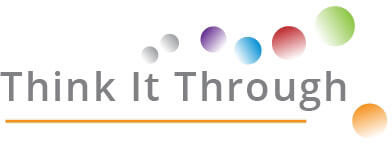
As a practitioner and therefore an occasional ‘seller’ of Thinking Environment coaching or facilitation, how often do you get asked by a possible client ‘is there any evidence for how or why this works – how can you prove it?’
It’s not my favourite question. It tends to suck us both down a rabbit hole of explanation and counter-questioning, almost of justification, that is less than satisfactory to both parties. I know (from years of this) that many people who start from a position of scepticism will actually become the most enthusiastic advocates of this way of being – and I also know that that is most probably going to happen through their direct experience of the 10 Components, not through listening to me.
FYI there is a long list of case studies and other evidence-based writing on the Time to Think website to offer, some of which is helpful – and it’s a perfect example of Information as a component too, since I know that simply absorbing the right story or piece of research is going to help this new client to understand this better, and then to make the choice to work with me.
Research
Last week on LinkedIn I reposted a piece from Josh Hammond that summarised some significant brain-based research from Microsoft and included the colourful illustration above. People have responded with so much interest it’s encouraged me to go looking for the original Microsoft research. I really recommend that you read it, it adds so much dimension.
As you’ll see 14 people were involved and everyone went through the same meetings experiences online, in sequences of 30 mins. A key point to note is that when the group stopped at 30 minutes for a 10 minute break, they didn’t just stop, they then spent 10 minutes meditating using the Headspace app.
“Our research shows breaks are important, not just to make us less exhausted by the end of the day, but to actually improve our ability to focus and engage while in those meetings,” says Michael Bohan, senior director of Microsoft’s Human Factors Engineering group, who oversaw the project.
“What makes this study so powerful and relatable is that we’re effectively visualizing for people what they experience phenomenologically inside,” Bohan says. “It’s not an abstraction—quite the opposite. It’s a scientific expression of the stress and fatigue people feel during back-to-backs.”
It’s a small study, and of course (my own inner cynic having a go!) it was done to back up Microsoft’s own product marketing. And it’s also timely and accurate research that demonstrates visually something we all know and feel instinctively.
Ease
Which is that in order to think well and clearly we need deliberately to make space for our minds to relax: we need to notice and cultivate Ease.
Which has to mean ‘discarding internal urgency’. Internal urgency stimulates cortisol and adrenalin, exactly as described and illustrated in this research (some really beautiful imaging here) and stops us from thinking well, or even from thinking at all.
When we introduce even 3 or 4 of the Components of the Thinking Environment (Attention, Ease, Equality, Appreciation) and use Rounds in a meeting, when we begin and end with what is going well, we are offering exactly what each mind needs in order to reduce stress and gain ease in the moment.
Benefit
This research points out what we all know and feel internally: the fact that we can be online end to end throughout the day does not mean that we should be, and becoming exact about beginnings, endings, timings and agendas could be a gamechanger, even for the most sceptical. It aligns exactly with other recent physiological discoveries of great benefit, such as Polyvagal Theory, and the Thinking Environment conveniently offers us both the theoretical findings and the practical processes that will reliably bring us into the calm blue spaces of this illustration. What is not to love?!
Do you agree? How would you use this research to win over the sceptics – and what else have you found that supports understanding of this remarkable way of being – do let me know.
